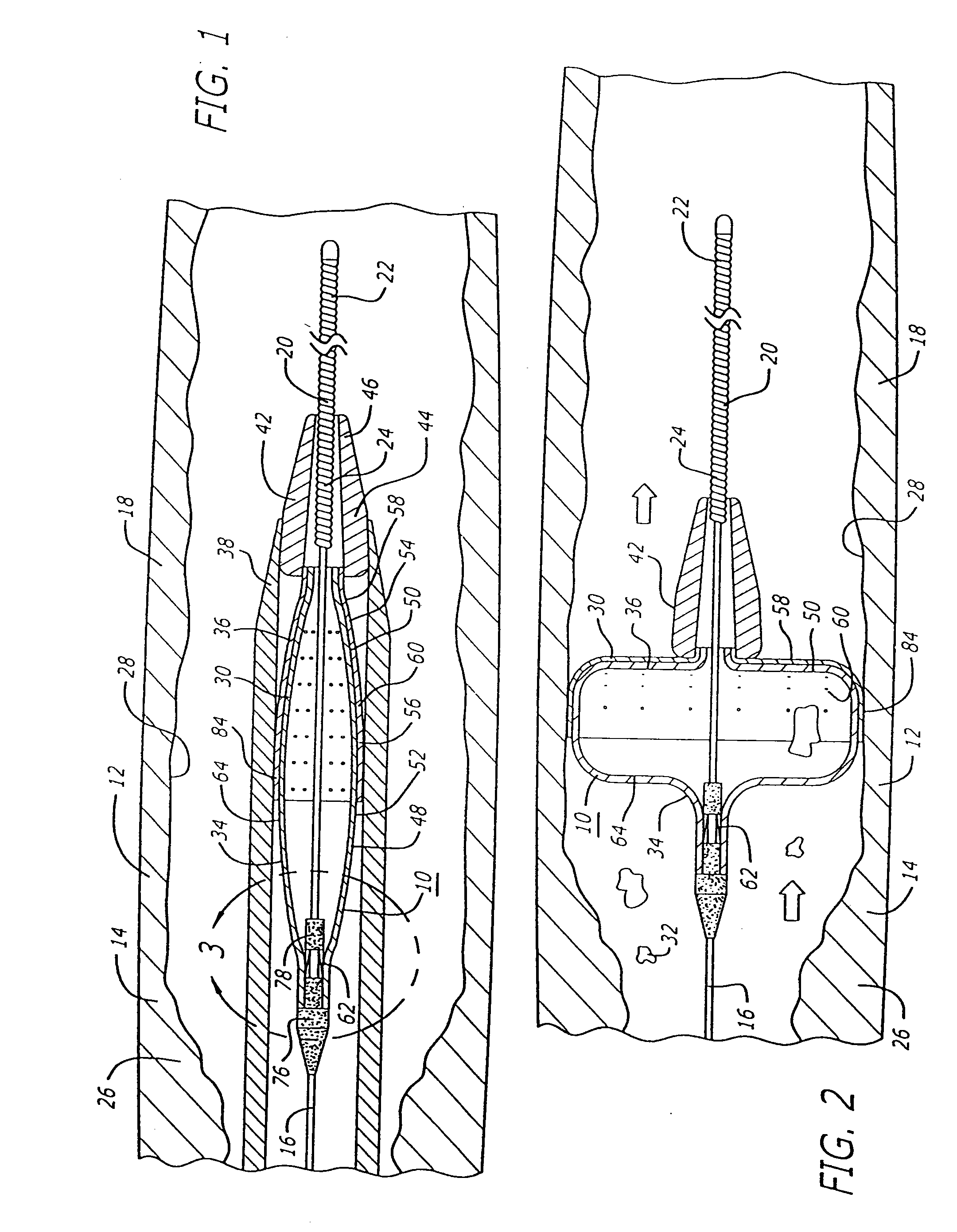Filter device for embolic protection systems
a filter device and protection system technology, applied in the field of embolic protection systems and methods, can solve the problems of emboli not always fully vaporized, may enter the bloodstream, and the patient's release into the circulatory system can be extremely dangerous, and achieve the effect of a higher degree of confidence in the efficient operation of the filtering system
- Summary
- Abstract
- Description
- Claims
- Application Information
AI Technical Summary
Benefits of technology
Problems solved by technology
Method used
Image
Examples
Embodiment Construction
[0025] The present invention is directed to an improved system and method for enabling the capture of embolic material which may be released into the blood vessel during the therapeutic interventional procedure, in an efficient and effective manner. The invention enables a filter device to be snap-fitted to a guide wire for effective and convenient engagement therewith, enables rotational movement of the filter device independent of rotational movement of the guide wire, and inhibits translational movement of the filter device along the guide wire. The present invention is further directed to efficiently providing a reference for positioning the filter device in the patient's anatomy. The filter device is also formed of expandable material, and includes an end thereof which is formed so as to be in tension, enabling a portion of the filter device to be in tension and another portion to be in compression, to aid the filter device in the bending thereof in tortuous vasculature.
[0026]...
PUM
 Login to View More
Login to View More Abstract
Description
Claims
Application Information
 Login to View More
Login to View More - R&D
- Intellectual Property
- Life Sciences
- Materials
- Tech Scout
- Unparalleled Data Quality
- Higher Quality Content
- 60% Fewer Hallucinations
Browse by: Latest US Patents, China's latest patents, Technical Efficacy Thesaurus, Application Domain, Technology Topic, Popular Technical Reports.
© 2025 PatSnap. All rights reserved.Legal|Privacy policy|Modern Slavery Act Transparency Statement|Sitemap|About US| Contact US: help@patsnap.com



